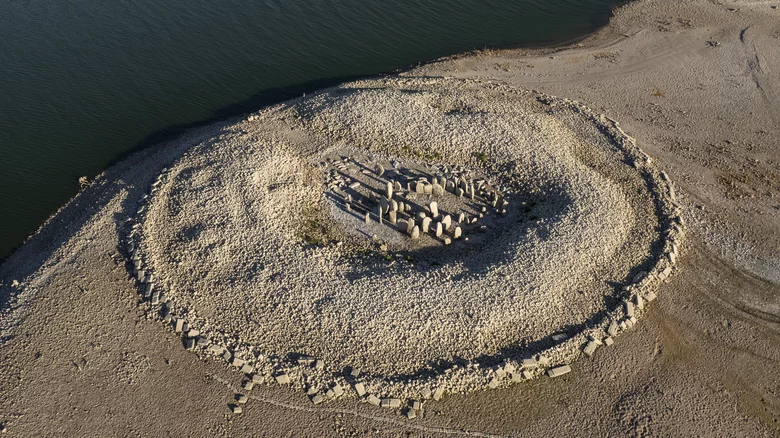Rising temperatures and drought conditions have caused serious problems for human populations all over the world, according to the World Health Organization. Those dramatic changes in landscape brought on by lowering water levels, though, have also led to a number of notable discoveries, as Insider notes. One area particularly affected by drought has been the central Spanish province of Caceres, where water levels in the Valdecanas reservoir have dropped nearly 30%, and as a result, a fascinating site from near pre-history has been recovered, per Reuters.
Though that lack of water has caused a number of serious problems in the country, the archaeological site that reemerged from the water in Spain dates to around 5,000 B.C., as Reuters also notes. The site, which up until recently was submerged, was discovered first in the 1920s, but it was lost when the area was flooded for a reservoir project under Franco's leadership. The chance to study the area once again is a rare opportunity for scientists, according to Madrid's Complutense University archaeologist Enrique Cedillo (via Reuters).
THE SPANISH STONEHENGE WAS UNCOVERED
The archaeological site uncovered by the receding waters of Valdecanas reservoir near the city of Huelva consists of dolmens, or large neolithic stone structures, as well as a number of standing stones similar to England's Stonehenge, according to CNN. For this reason, the area is officially called the Dolmen of Guadalperal, but it's colloquially known as the Spanish Stonehenge. In total there are thousands of stones on the site, spread over some 1,500 acres.
What's also notable about the Iberian complex is that experts estimate there are some 500 stones still standing at the Spanish Stonehenge. According to experts, they were put there at different points in history, beginning as early as 5000 B.C. up through 1000 B.C., as Live Science notes. There are also coffin-shaped structures on the site called cists where researchers believe human remains were buried. Similar sites were also likely used as memorials for the dead, but so far, no human remains have been verified.
THE SPANISH STONEHENGE COULD BE OLDER THAN OTHER SITES
A number of similar sites with similar stone structures are found across Europe, according to Britannica, but otherwise not much is known about those who built them. It's believed that such areas served a number of purposes for ancient peoples, both ritualistic and astronomic, among other potential explanations. It's not possible to date the exact age of the stone, but the age of the sediment on the stone can be estimated with radiocarbon dating techniques (via The New York Times). The sheer number of different types of stones and stone structures at the Spanish complex is particularly notable, and it's believed to be possibly older than other similar areas so far studied.
Since the Spanish area was spotted in the 1920s and then flooded in the 1960s, it's only been above water four times. Now that the "Spanish Stonehenge" is once more accessible, some advocate moving it permanently away from the flood area.
The Iberian Peninsula drought that contributed to the resurfacing of the Spanish Stonehenge is the worst of its kind in some 1,200 years. Scientists expect it will worsen, according to CNN.








